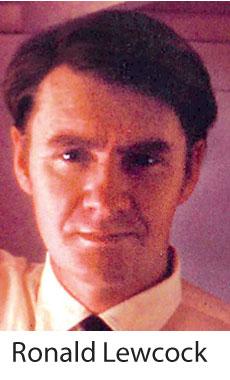Reply To:
Name - Reply Comment
Ronald Lewcock died on the morning of August 13 at the Sansoni residence at 20, Anderson Road, Colombo. He was one month away from celebrating his 94th birthday.
was one month away from celebrating his 94th birthday.
At his 90th birthday, Ronald took me by surprise and presented me with a bound, autographed copy of his photographs. It was a limited edition: just 4 copies were published. It comprised a collection of photographs of colonial buildings; some dating back more than half a century. These views of rare and arresting images of ancient buildings, beautiful churches, monasteries and street scenes are of Brazil, Mozambique, St. Lucia [Caribbean], South Africa, India and Sri Lanka. To this Lewcock included a self-portrait of himself as a young man. Only a few of these structures have survived the large-scale demolition that ensued over the last decades; during the large scale urban renewal programmes. We ought to be grateful to Ronal Lewcock for restoring and conserving these images for the future study by architectural historians.
Although I had known Ronald Lewcock for an inordinate length of time, it was during the last decade that we re-connected. I gained much from the many discussions we had as Ron was a vast storehouse of scholarly knowledge. The subjects we covered ranged from architectural history; dating to buildings from 19th century photographic images; diagnosing the particularities of early Portuguese, Dutch and British building in Sri Lanka; and the comparative studies in colonial architecture.
His association with colonial architecture of this country goes back over half a century.
In the early 1960s a team of four- including Ulric Plesner Laki Senanyake, his future wife Barbara Sansoni and myself- had commenced on the documentation of 16-19th century vernacular architecture. In 1969 when preparations were underway to publish these valuable documentation Ronald arrived in Sri Lanka and showed a great interest in Barbara’s perspective drawings. It was at this period that I first encountered Ronald. With regards to Sri Lanka he made several important contributions; most notably the Report on the Listing and Preservation of Historic Building and Zones in the Colombo Urban Area [1980], which he undertook for the United Nations Centre for Human Settlement (UN Habitat). This report includes a comprehensive listing of historic buildings in Colombo and its neighbouring suburbs. In this report he also recommends reforms with regards to an array of by-laws for the conservation and preservation of historic buildings in the different zones of the Colombo Urban Area. By September 1980 the detailed report was published. It even included recommendations on the need for publicity and public awareness to protect these rare building, representatives of Colombo’s architectural history spanning over 400 years.
Ronald offered his services to us. Over several years he had been conducting his research on colonial buildings spreading over five continents. Hence, he had a natural affinity to the project to document aspects of the architecture of this Island. He would go on to collaborate with Barbara and Laki in a compilation entitled Architecture of an Island published in 1998.
The journey that brought Ronald to Sri Lanka was a long and illustrious one. Born in Australia he had his early education in Brisbane, and continued his studies in Capetown, South Africa, at the university where he graduated with a doctorate in architecture. Subsequently he practised as a consultant in acoustics, as well as a conservator of buildings. He took up a position as a Senior Lecturer in the University of Natal. Later he was appointed as a visiting professor at Columbia University and Fellow at Claire Hall, Cambridge.
In 1972 he was a member of the joint Cambridge/Swiss and Australian expedition team to Yemen, which was sponsored by the brother of Lawrence of Arabia. The field work and research went on for a decade following which they brought out a publication, Sana - An Arabian Islamic city (1983). In 1976 Ronald co-designed and mounted the Nomad and City exhibition at the Museum of Mankind, British Museum. During his time in the UK he directed a design studio on architecture in the developing world at the AA School, London.
During the 1970s and 1980s Ronald was involved in a range of multidisciplinary activities and was appointed to several distinguished positions too many to list out. His real passion though, was in the study of Islamic architecture and this resulted in his appointment as the Aga Khan Professor at MIT from 1984-1994.He had a deep engagement and affection for Sri Lanka and spent the last few decades between here and the UK?? In the last few years Ronald settled in Sri Lanka with his wife Barbara for decades in their family home.
Perusing through his photographs again, it is difficult to not feel that we have truly lost someone so deeply knowledgeable and thoughtful.
Ismeth Raheem